Your Gut Is A Liar: The Founder's No-BS Guide to Customer Feedback Tools
Stop guessing. A battle-tested founder's brutally honest review of the 12 best customer feedback tools. No fluff, just what actually works.
Posted by
Related reading
Stop Asking Useless Survey Questions. Steal These Instead.
Stop guessing. Get battle-tested survey questions examples to find out what your customers actually want. Real talk, no fluff. Just actionable insights.
Fix Your Customer Feedback Questionnaire Now
Revamp your customer feedback questionnaire with brutally honest advice. Get actionable insights and stop wasting your customers' time with bad surveys.
How to Collect Customer Feedback (Without Wasting Your Goddamn Time)
Stop guessing. Learn how to collect customer feedback that drives growth. A no-BS guide for founders on building products people actually want.
Alright, let's be real for a second. That roadmap you're so proud of? It’s probably a work of fiction. A list of features you and your co-founder dreamed up over stale pizza, based on a handful of polite compliments and a whole lot of ego. I’ve been there. I’ve shipped "genius" features to the sound of crickets and celebrated vanity metrics while the churn meter was redlining.
The hard truth nobody wants to admit is that most startups don't die from a lack of genius; they die from a surplus of delusion. They build what they think customers want, not what they'll actually pay for. Ignore your customers, and you’ll be lucky to survive the quarter.
This isn't some HubSpot listicle. This is a battle-tested breakdown of the best customer feedback tools for founders who are sick of guessing. We're going to talk about what actually works, what's corporate theater, and which tool will give you the unfiltered truth you need to stop building in the dark.
1. Backsy.ai: The Unfiltered Truth Machine
Most feedback tools are a joke. They give you star ratings and multiple-choice answers, which is like trying to understand a novel by only reading the punctuation. It's feedback theater—designed to create charts, not clarity. Backsy throws that entire model in the trash. It’s less of a survey tool and more of a direct line into your user's brain stem.
Instead of boxing users into polite, useless forms, it dares them to rant or rave via text or voice memo. This is where the gold is. It’s the raw, emotional, unstructured truth that doesn't fit in a spreadsheet. If a user is pissed off enough to leave you an angry voice note, that's not a problem—it's a gift. It's a signal strong enough to save you from building the wrong thing.
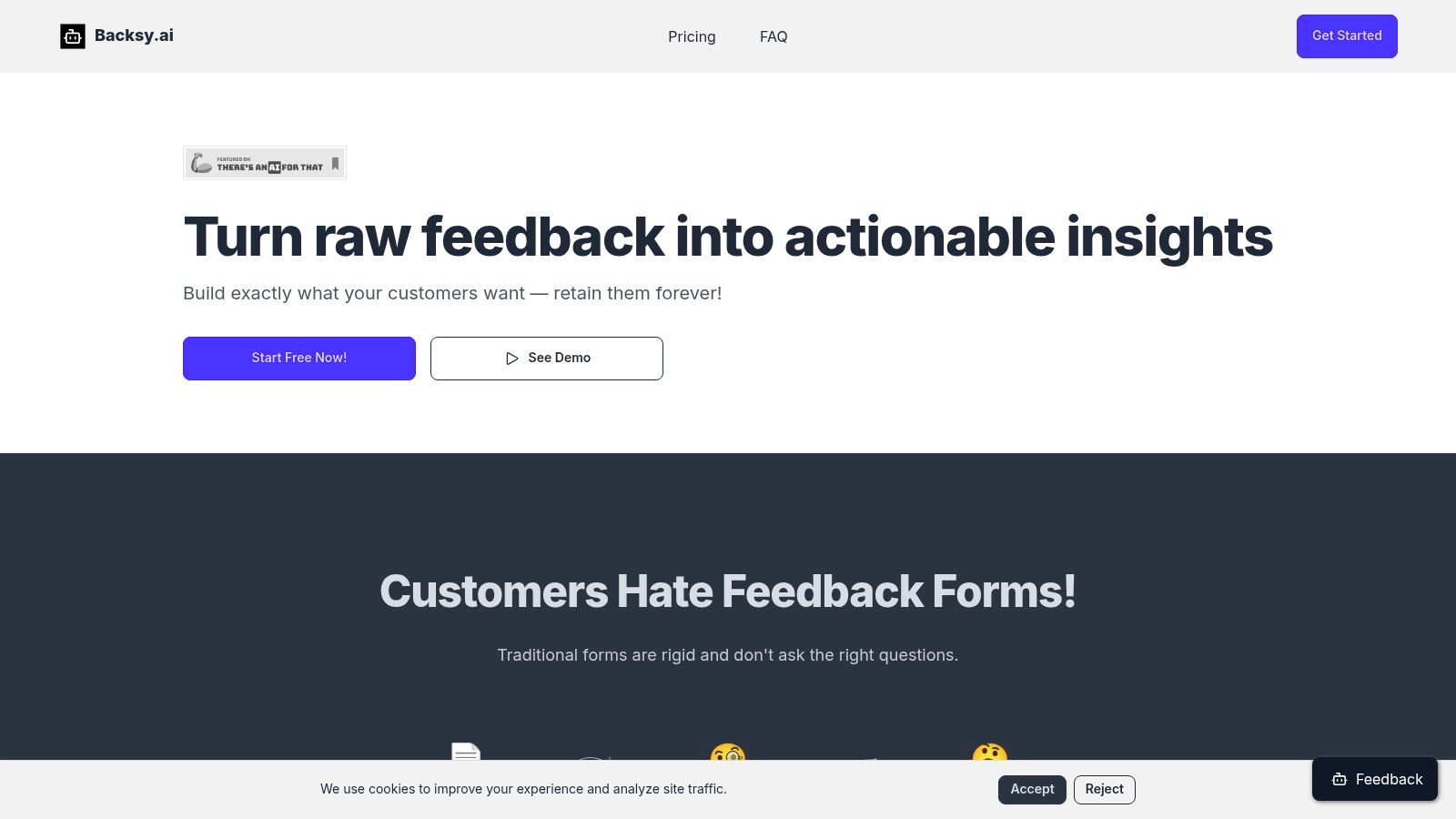
The Real Advantage
Backsy's killer feature is its AI signal finder. It's built to automatically incinerate the noise—the spam, the emoji-only replies, the polite fluff. What’s left is your real roadmap: bug reports, feature requests, and the kind of praise that actually means something. It turns a firehose of chaos into a prioritized to-do list.
I had a founder tell me, "A single voice memo from a power user pointed out a UX flaw we’d been blind to for months. It was painful to hear, and it saved the feature." That’s the ROI. Forget asking—start listening. It's worth learning how to get customer feedback on backsy.ai to get this right from day one.
Key Features and Pricing
- Unstructured Feedback: Collects open-ended text and voice feedback. Real talk, not radio buttons.
- AI-Powered Filtering: Kills spam and low-value noise so you only see what matters.
- Actionable Insights: Turns messy human language into a prioritized task list.
- Flexible Rewards: Bribe users for good feedback and turn praise into social proof.
Pricing: Credit-based with a free tier. It forces discipline—if you're just collecting vanity feedback, you'll feel it in your wallet.
| Pros | Cons |
|---|---|
| Captures authentic, unfiltered user sentiment via voice/text. | High feedback volume can get pricey if you're not disciplined. |
| AI saves you from drowning in useless data. | You can't delete feedback, so you're forced to face the ugly truth. |
| Consolidates feedback into a single, actionable dashboard. | Requires a culture that can handle brutal honesty. |
Takeaway: Stop asking polite questions and start collecting raw intelligence.
Website: backsy.ai
2. Qualtrics: The Enterprise Harpoon
If your company is swimming in so much data that you need an industrial-grade harpoon to catch a signal, that's Qualtrics. This isn't for gut-checking a new feature. This is a full-blown "Experience Management" platform for when you need to correlate customer sentiment with operational data to justify your job to the board. It's a business intelligence engine that happens to be powered by feedback.
Why It's On The List
Qualtrics is a beast. Its AI can tear through thousands of open-ended comments and find themes you'd miss even with a team of interns. It connects dots you didn't know existed, linking survey responses to CRM data and support tickets. But make no mistake, this is heavy artillery. It’s for when your feedback problem is a big data problem.
- Best For: Post-IPO companies or anyone with a dedicated "CX" department and a budget to match.
- The Catch: The price is "call us for a quote," which is code for "if you have to ask, you can't afford it." The learning curve is a cliff.
Takeaway: It's overkill for 99% of startups, but for the 1%, it's a command center.
Website: https://www.qualtrics.com/
3. SurveyMonkey: The Old Reliable Workhorse
Need to validate an idea before you waste an engineering sprint on it? That's SurveyMonkey. It's the old, reliable hammer in the toolbox. It’s not fancy, it won't uncover deep emotional truths, but it will get you straightforward answers, fast. It's the tool you use when "good enough" today is better than "perfect" next month.
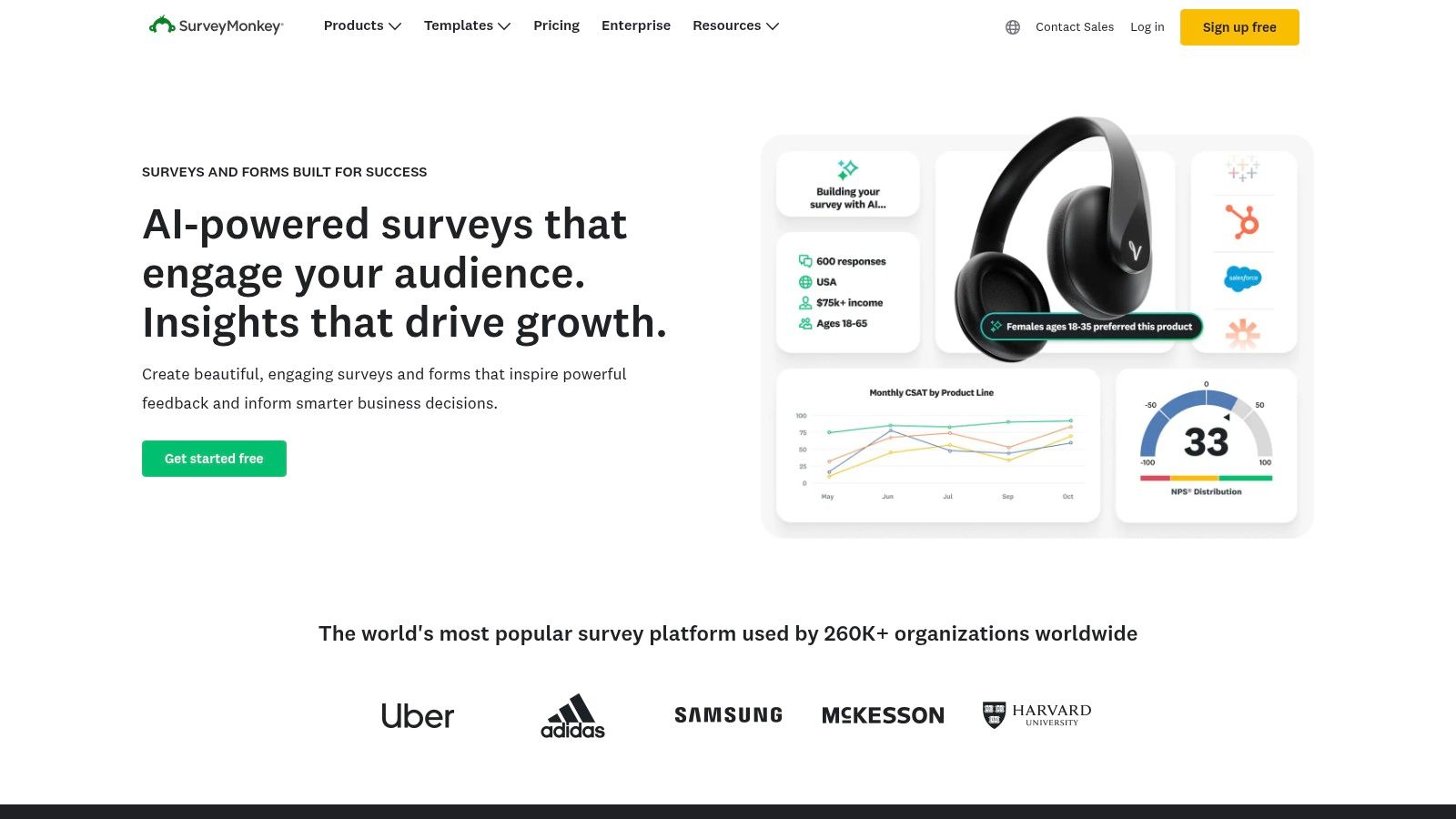
Why It's On The List
You can go from idea to live survey in under ten minutes. Its template library means you don't have to pretend to be a survey design expert. It’s the path of least resistance to getting some kind of data instead of operating on pure vibes. For quick market research or a simple satisfaction check, it's undefeated.
- Best For: Founders needing a quick gut-check, marketers planning events, or anyone who needs data yesterday.
- The Catch: The free plan is a restrictive teaser. The real features that make it useful are behind a paywall, and the surveys can look generic if you're lazy.
Takeaway: It's the fastest way to get out of your own head and get some basic data.
Website: https://www.surveymonkey.com/
4. Medallia: The Corporate Air Traffic Controller
When your company is so big that feedback is coming from call centers, retail stores, app reviews, and carrier pigeons, you need an air traffic controller. That's Medallia. It's built for giant organizations that need to orchestrate a company-wide response to a constant firehose of customer signals. This is not for startups. This is for empires.
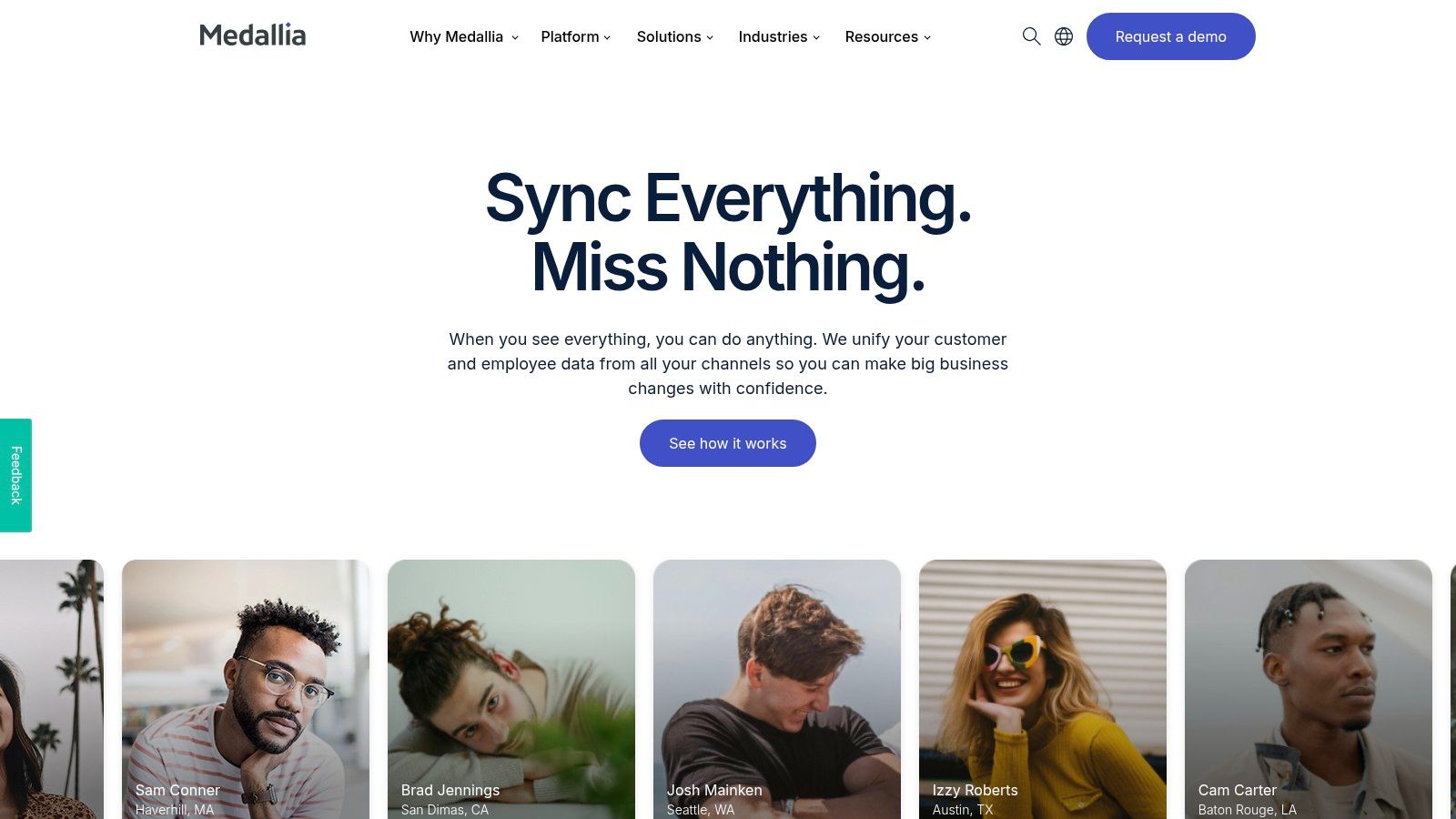
Why It's On The List
Medallia's superpower is turning feedback into immediate action. A negative review can automatically trigger an alert to a store manager's phone. It's about closing the loop at scale, turning a potential PR disaster into a save. Its AI is designed to parse text and speech from anywhere, giving executives a single dashboard to see if the ship is sinking.
- Best For: Hotel chains, retail giants, and any large-scale business trying to standardize an experience across thousands of touchpoints.
- The Catch: Medallia is a behemoth. The implementation is a massive project, and the price tag is designed to make CFOs sweat.
Takeaway: For massive B2C companies, it's essential infrastructure; for everyone else, it's a beautiful distraction.
Website: https://www.medallia.com/
5. Typeform: The Conversationalist
If your feedback form looks like a tax return, no one's going to fill it out. Typeform’s genius is making data collection feel like a conversation. It asks one question at a time, which is a simple psychological trick to keep people from getting overwhelmed and bailing. It’s a form builder for people who understand that user experience matters, even when you're asking for something.
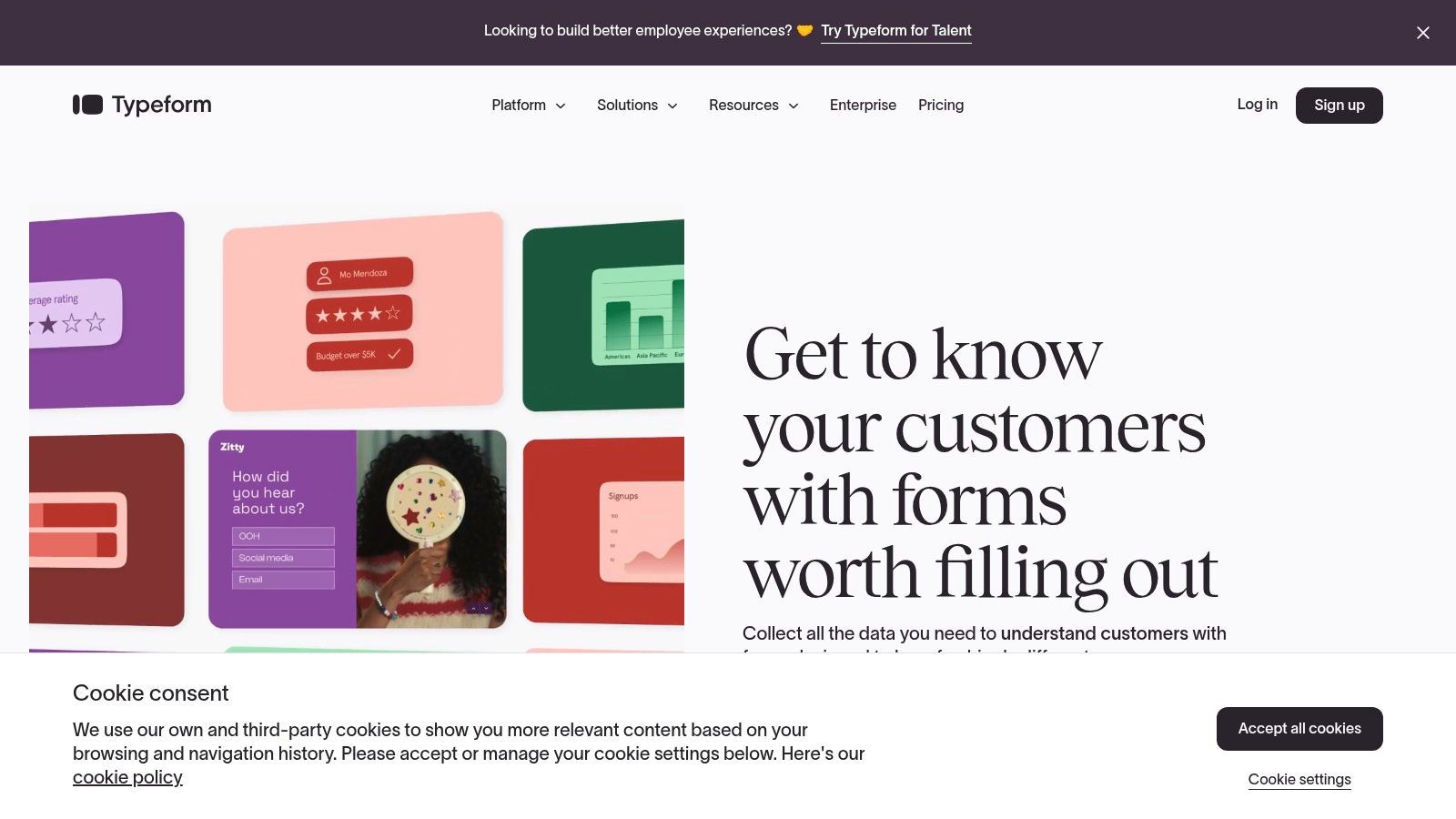
Why It's On The List
Higher completion rates. That's it. By making forms interactive and even fun, Typeform gets you more data. Its "Logic Jumps" let you create dynamic surveys that feel personal, not robotic. It's the difference between an interrogation and a chat. Plus, it plugs into everything, so the feedback actually goes where your team can use it.
- Best For: Marketers doing customer onboarding, founders running product-market fit surveys, or anyone who needs qualitative data without boring users to death.
- The Catch: The free plan is a ghost of the real product. You'll hit the paywall fast. It's designed for engagement, not for hardcore quantitative analysis.
Takeaway: Use this when the humanity of the interaction matters more than the volume of data points.
Website: https://www.typeform.com/
6. Hotjar: The Over-the-Shoulder Spy
Tired of guessing why users bail on your pricing page? Stop asking and start watching. Hotjar is the digital equivalent of standing over your user's shoulder. It combines behavior analytics (heatmaps, session recordings) with direct feedback (polls, surveys). It shows you what users do, not just what they say. These are often two very different things.
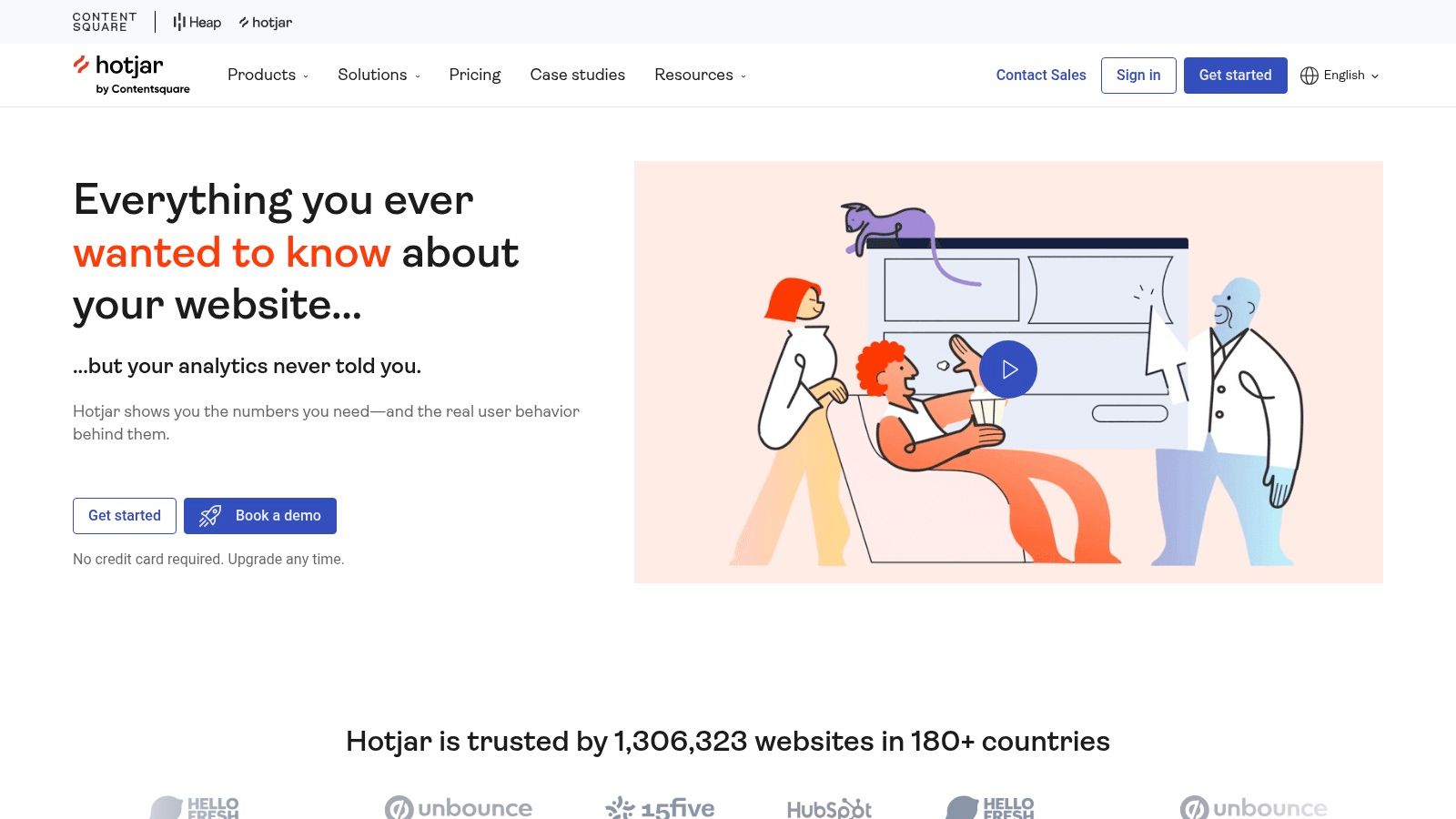
Why It's On The List
Hotjar connects the what to the why. You can watch a recording of a user rage-clicking a broken button, then trigger a poll asking them what went wrong right at that moment. That in-context feedback is pure, uncut insight. It helps you find the UX potholes that are silently murdering your conversion rates.
- Best For: Product teams and founders obsessed with conversion rates and fixing usability friction.
- The Catch: You can drown in session recordings if you're not disciplined. It becomes a time-suck without a clear hypothesis. The free plan gets you hooked; the real data costs money.
Takeaway: Watch what they do, then ask them why they did it.
Website: https://www.hotjar.com/
7. Alchemer: The Swiss Army Knife
Sometimes you need a scalpel; other times, you need a Swiss Army knife. Alchemer (formerly SurveyGizmo) is the knife. It’s for when you need to do more than just ask questions—you need to embed feedback into your product, automate follow-ups, and pipe the data into your CRM without begging an engineer for help. It’s a tool built for PMs who want to build systems, not just surveys.
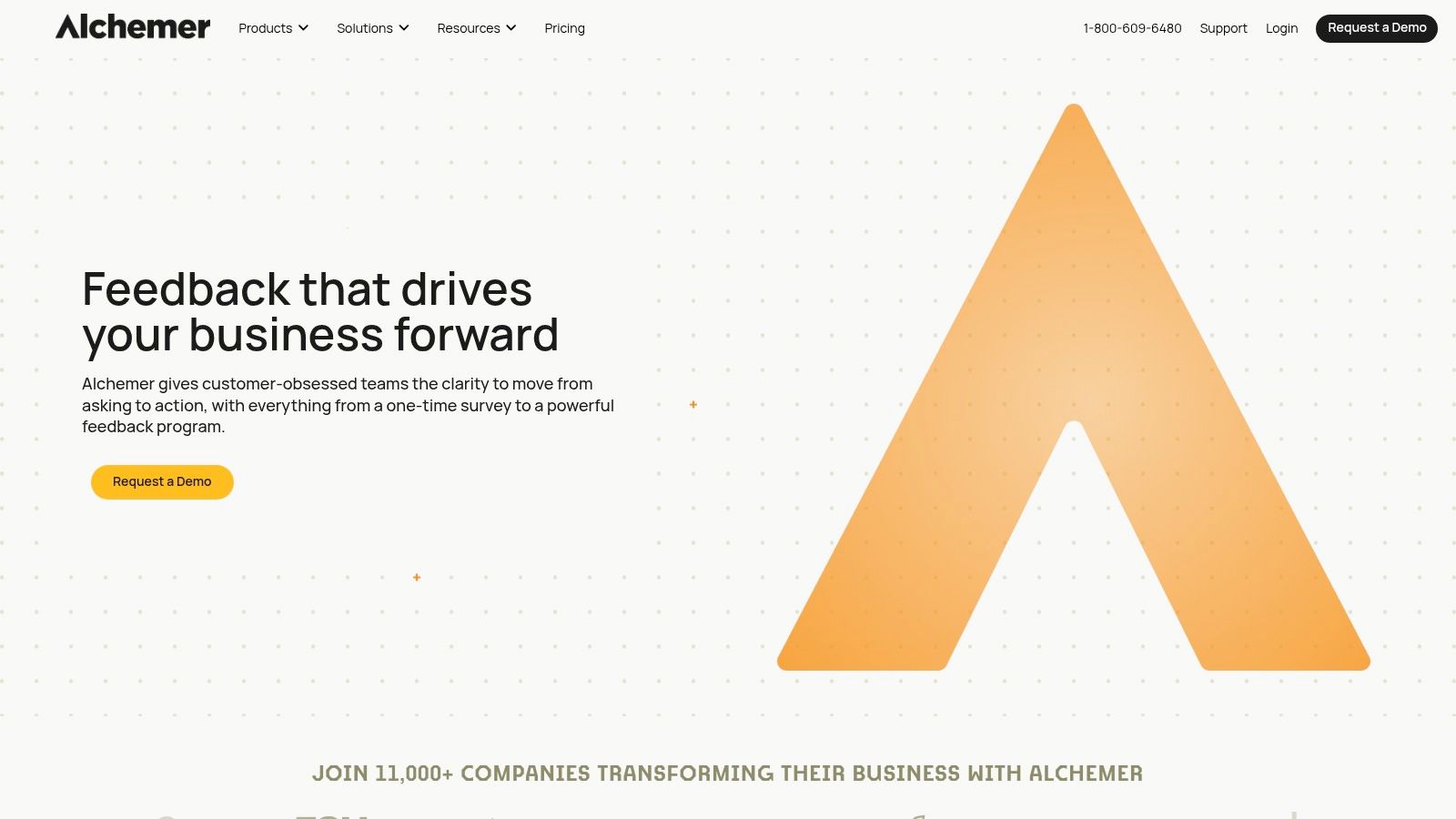
Why It's On The List
It finds the sweet spot between ease of use and raw power. You can spin up a simple poll in minutes, but you can also build complex workflows that automatically create a support ticket from a bad review or add a happy user to a marketing campaign in Salesforce. It turns feedback from a static report into an automated business process.
- Best For: Teams that need a flexible, all-in-one tool for surveys and automated workflows without an enterprise price tag.
- The Catch: The sheer number of options can feel like drinking from a firehose. You have to talk to sales to unlock the good stuff, which is a drag for teams that want to move fast.
Takeaway: It's the right tool when feedback needs to trigger an action, not just a report.
Website: https://www.alchemer.com/
8. Survicate: The In-Product Interrogator
If your idea of "listening" is an annual survey, you're playing a different game. Survicate is built for continuous, in-product feedback. It's about asking the right question at the right time, directly within your app or website. It's for getting a constant pulse on your users, not a once-a-year snapshot.
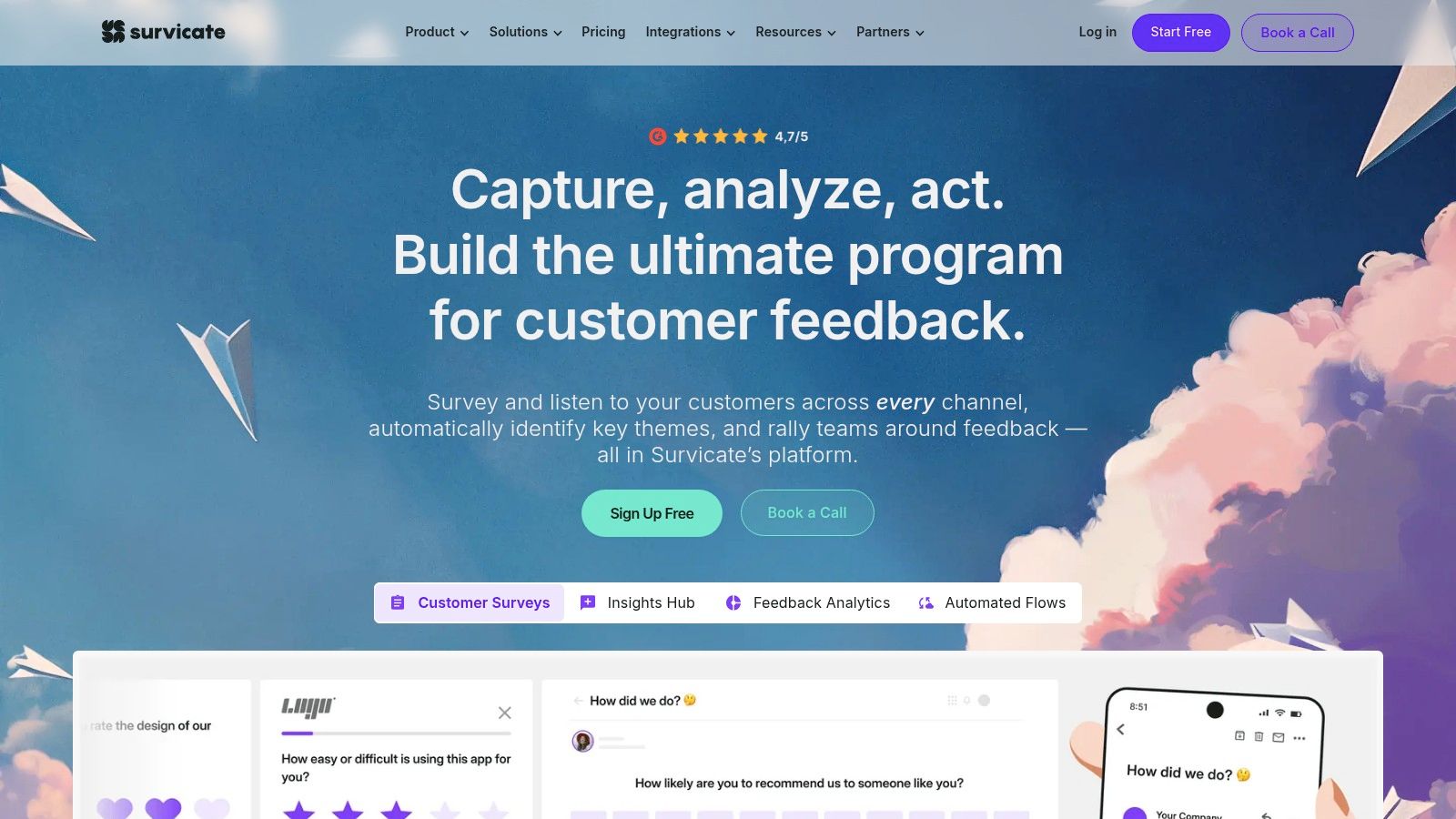
Why It's On The List
It makes multi-channel feedback dead simple. You can launch an NPS, CSAT, or product-market fit survey in minutes using one of their 400+ templates. Its power lies in its integrations. You can trigger a survey in Intercom based on user behavior and pipe the answers directly into their HubSpot record. No engineering required.
- Best For: Product managers who need to deploy targeted, in-context surveys without waiting on developers.
- The Catch: The good integrations and features are locked behind pricier tiers. The free plan is generous, but you'll outgrow it fast if you're serious.
Takeaway: Meet your users where they are, and ask them questions while the experience is fresh.
Website: https://survicate.com/
9. Zonka Feedback: The All-Terrain Vehicle
Your customers live online and offline. Your feedback tool should too. Zonka is built for the messy reality of multi-channel businesses. It works on a tablet at a trade show just as well as it does in an email. It's the rugged, all-terrain vehicle of data collection for businesses that don't just live behind a screen.
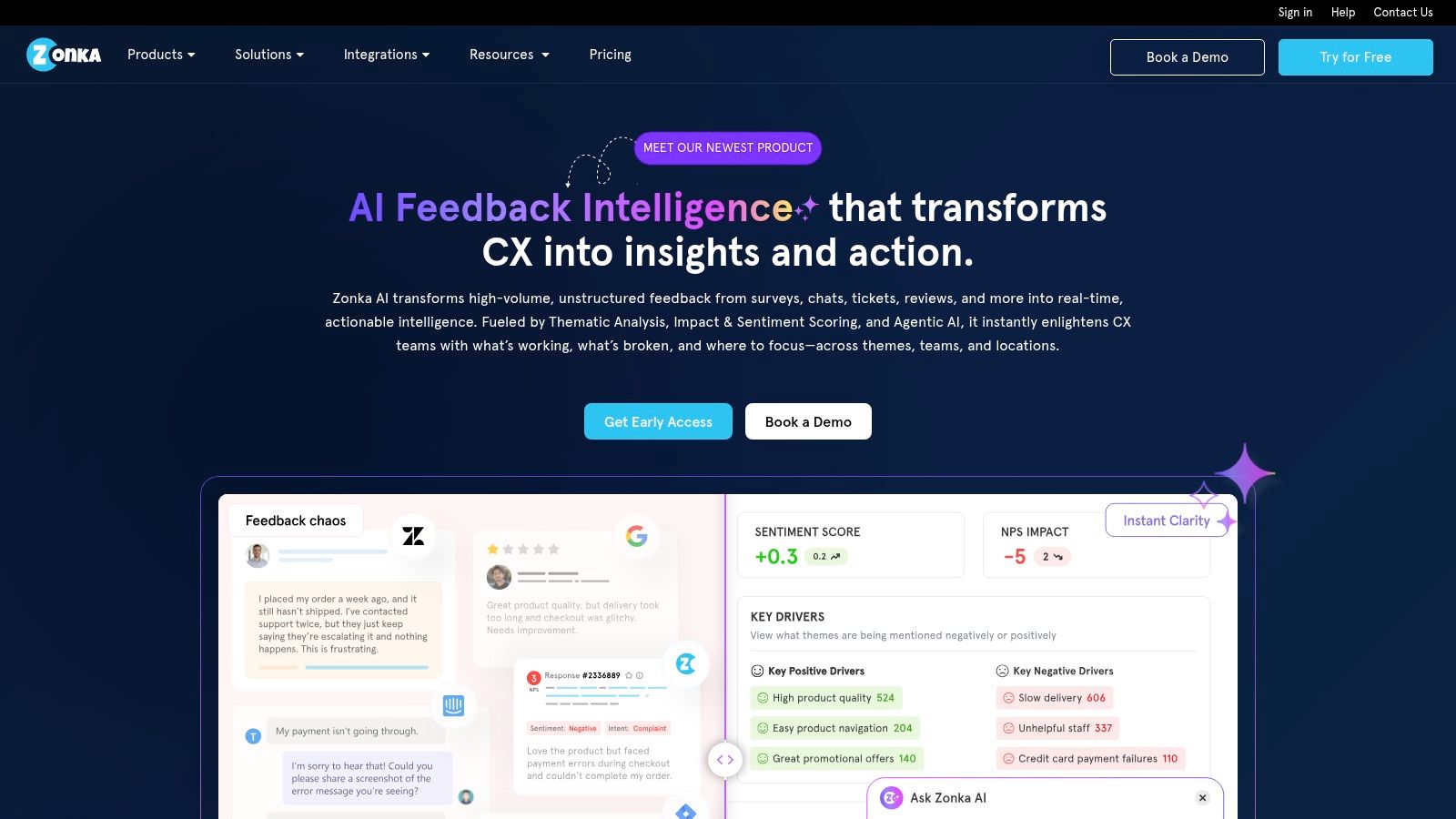
Why It's On The List
Versatility. It deploys surveys via email, SMS, QR codes, and offline apps on a tablet. For a restaurant, retailer, or event, this is non-negotiable. Knowing how to track QR code scans effectively can be the difference between data and a black hole. Zonka brings all that feedback into one dashboard so you're not trying to stitch together five different spreadsheets.
- Best For: Hospitality, retail, and events—any business that interacts with customers in the real world.
- The Catch: If you're a pure-play SaaS company, this is probably overkill. Its strength is its breadth, which can feel like unnecessary complexity if all you need is a web widget.
Takeaway: If your customers aren't 100% online, your feedback tool shouldn't be either.
Website: https://www.zonkafeedback.com/
10. UserReport: The Bootstrapper's Friend
If you're pre-seed and the words "quote-based pricing" give you cold sweats, UserReport is your entry point. It's a simple two-for-one: a survey widget and basic web analytics. You won't get sophisticated AI, but you'll get data on who your users are and what they want without writing a check you can't cash. It's for founders who need to prove a hypothesis now.
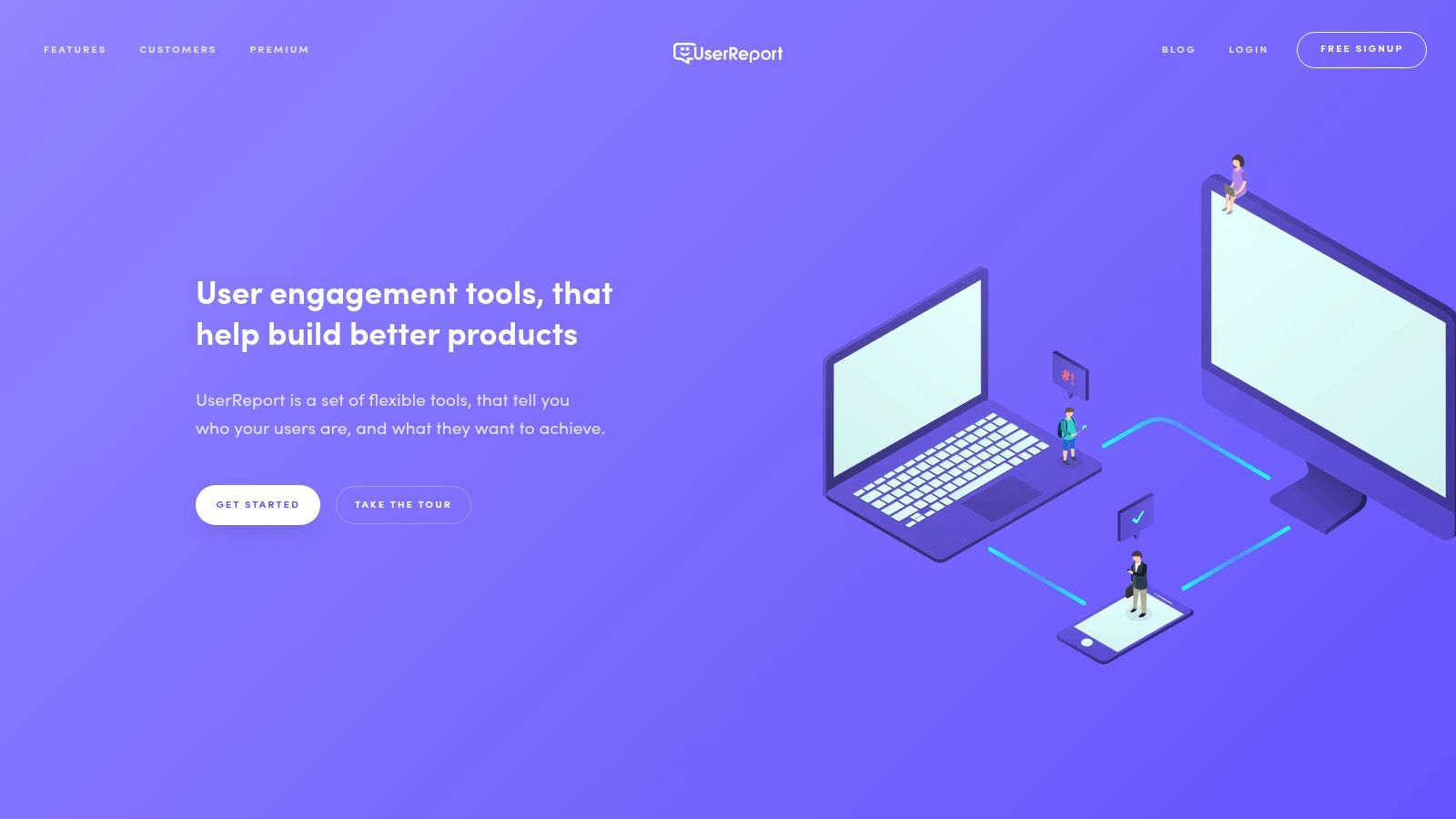
Why It's On The List
It's free and it works. The magic is its Google Analytics integration. You can see what your most engaged users are asking for or why visitors from Twitter have a lower satisfaction score. It connects feedback to on-site behavior in the simplest way possible. It gets you in the game.
- Best For: Bootstrapped founders and early-stage startups that need to connect user demographics to feedback with zero budget.
- The Catch: It's basic. The surveys are clunky, and the reporting is bare-bones. You'll outgrow it, and that's the point.
Takeaway: Something is infinitely better than nothing. Start here if you have no money.
Website: https://www.userreport.com/
11. GetFeedback: The Salesforce Extension
If your team lives inside Salesforce, GetFeedback is the tool for you. It's designed to feel like a native part of your CRM. This isn't about exporting CSVs; it's about piping survey data directly into Salesforce objects, triggering automated workflows, and giving your sales team real-time ammo. It’s a feedback engine that plugs directly into your system of record.
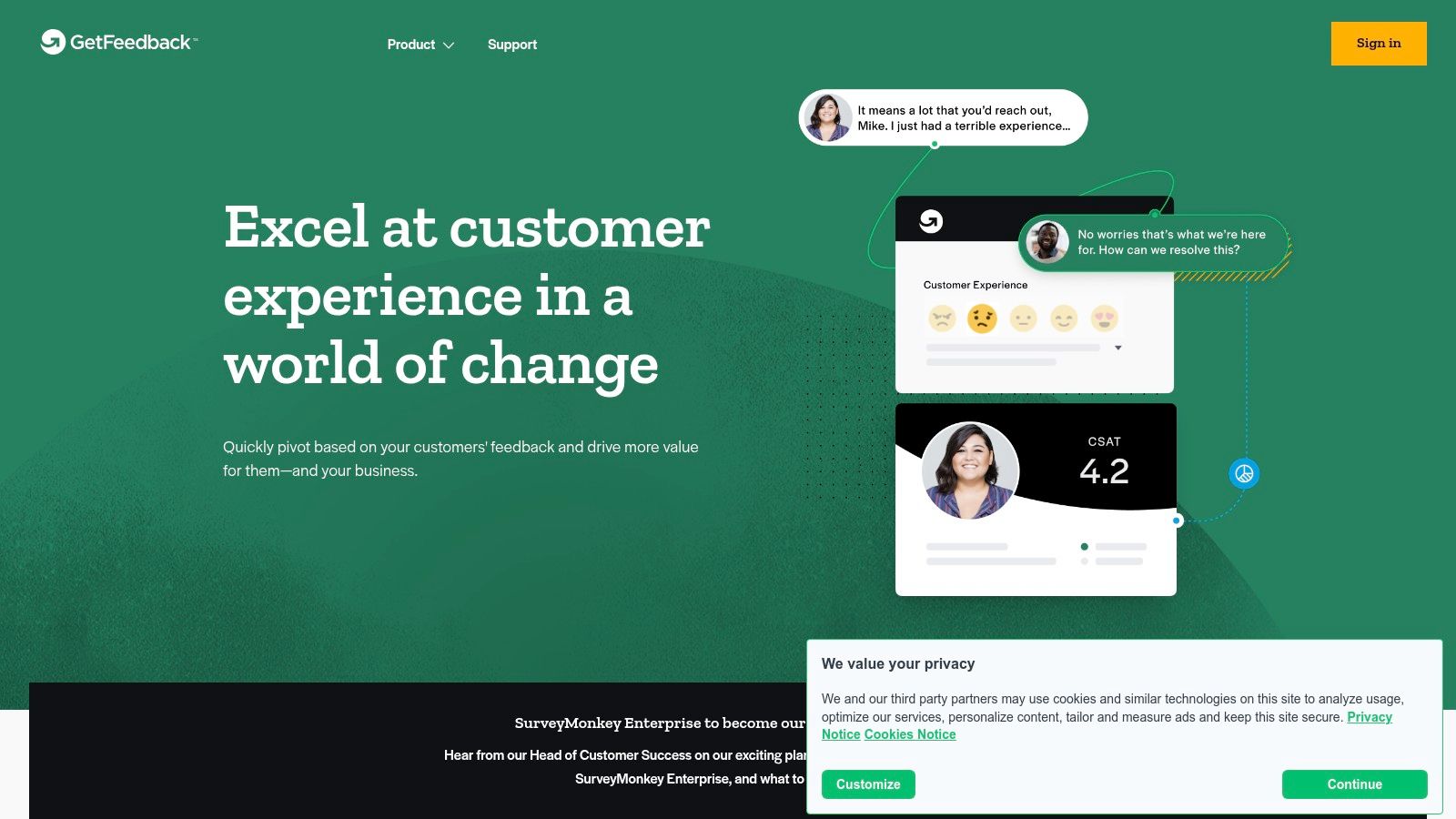
Why It's On The List
It’s all about the Salesforce integration. It's deep and seamless. You can personalize surveys with CRM data and map responses back in real-time. A low NPS score can automatically create a support case. A glowing review can trigger an alert for a sales rep to ask for a referral. It makes feedback operational.
- Best For: Companies where Salesforce is the center of their universe.
- The Catch: If you don't use Salesforce, it's the wrong tool. Full stop. The pricing is built for teams who see this as mission-critical infrastructure, not a nice-to-have.
Takeaway: If your business runs on Salesforce, this is the most direct path from feedback to action.
Website: https://www.getfeedback.com/
12. InMoment: The Other Enterprise Command Center
Like Qualtrics, InMoment is an enterprise-grade command center for your entire Voice of the Customer (VoC) program. It’s for architecting a listening strategy across social media, reviews, call centers, and surveys, then funneling it all through a sophisticated AI engine. This is the heavy machinery for when you move from collecting feedback to full-scale "experience optimization."
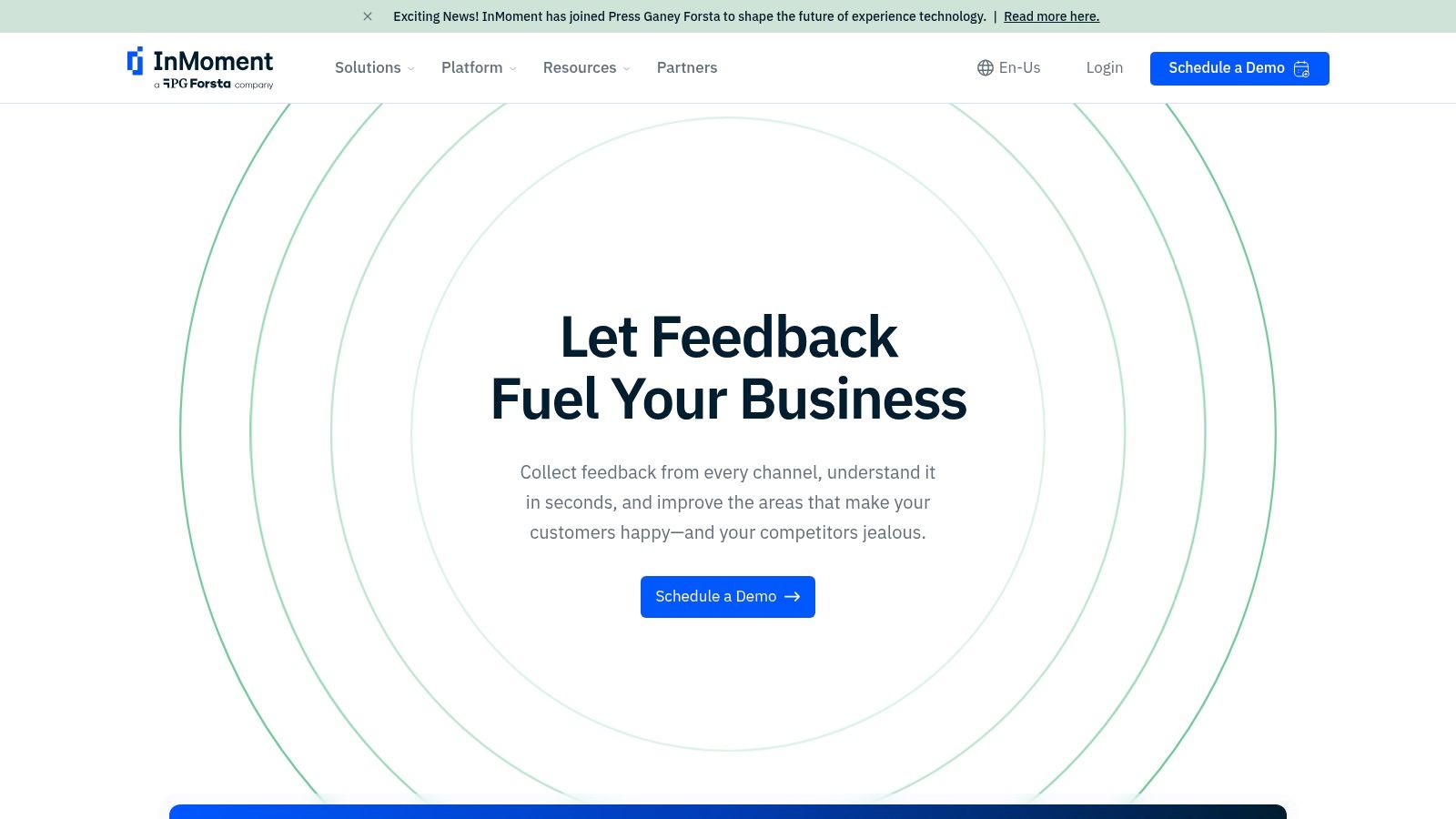
Why It's On The List
It combines powerful tech with managed services, which means they'll help you run your VoC program. Its text and sentiment analytics are top-tier, designed to find the nuance in massive volumes of unstructured data. It's built to create a single, coherent story about the customer experience from a dozen disparate sources.
- Best For: Large enterprises that need a holistic, omni-channel approach and have the budget for a partner, not just a tool.
- The Catch: It’s an enterprise platform with an enterprise price tag and an enterprise implementation timeline. It’s overkill for almost everyone else.
Takeaway: It’s for when your VoC program is too big to manage with software alone.
Website: https://www.inmoment.com/
Stop Admiring the Problem and Pick a Damn Tool
We just tore down twelve of the best customer feedback tools. You have a no-BS breakdown of who they're for, what they'll cost you, and where they'll fail you. The biggest mistake you can make now isn't picking the 'wrong' tool. It's picking no tool. It's letting analysis paralysis trick you into another week of building based on your own biases.
Your gut is a liar. It's a terrible product manager, fatally biased by what you want to be true. The market doesn't care about your clever idea or your elegant code. It cares about whether you solve a painful problem. The only way to find out what that is is to ask, shut up, and listen. Not for the compliments—you're building an intelligence-gathering machine, not an ego-stroking one.
How to Choose Your Weapon
Stop looking for "best." Look for "right for right now."
- Early-Stage Founders: You need speed and signal. Look at Hotjar for behavior, Survicate for in-app polls, or Backsy.ai to turn raw chatter into a roadmap. Your goal is to validate, iterate, or kill an idea, fast.
- Established Businesses: You have scale, which means you have routing problems. You need a platform like Qualtrics or InMoment to manage the chaos, or a specialist like GetFeedback if you live in Salesforce.
- Niche Needs: Don't use a hammer to turn a screw. If all you need is social proof, look at a dedicated testimonial generator instead of a general survey tool.
The perfect tool doesn't exist. A good-enough tool you start using today beats a perfect one you're still researching next month.
Stop guessing and start building what customers will actually pay for with the unfiltered truth from Backsy.ai.